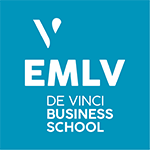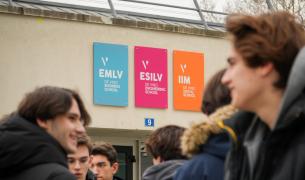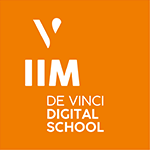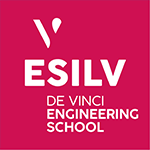Othmane Sebban; Ahmed Azough; Mohamed Lamrini
Improving visual perception through technology: a comparative analysis of real-time visual aid systems Article de journal
Dans: TELKOMNIKA Telecommunication, Computing, Electronics and Control, vol. 23, no. 2, p. 349-370, 2025.
@article{sebban_3516,
title = {Improving visual perception through technology: a comparative analysis of real-time visual aid systems},
author = {Othmane Sebban and Ahmed Azough and Mohamed Lamrini},
url = {https://telkomnika.uad.ac.id/index.php/TELKOMNIKA/article/view/26455},
year = {2025},
date = {2025-04-01},
journal = {TELKOMNIKA Telecommunication, Computing, Electronics and Control},
volume = {23},
number = {2},
pages = {349-370},
abstract = {Visually impaired individuals continue to face barriers in accessing reading and listening resources. To address these challenges, we present a comparative analysis of cutting-edge technological solutions designed to assist people with visual impairments by providing relevant feedback and effective support. Our study examines various models leveraging InceptionV3 and V4 architectures, long short-term memory (LSTM) and gated recurrent unit (GRU) decoders, and datasets such as Microsoft Common Objects in Context (MSCOCO) 2017. Additionally, we explore the integration of optical character recognition (OCR), translation tools, and image detection techniques, including scale-invariant feature transform (SIFT), speeded-up robust features (SURF), oriented FAST and rotated BRIEF (ORB), and binary robust invariant scalable keypoints (BRISK). Through this analysis, we highlight the advancements and potential of assistive technologies. To assess these solutions, we have implemented a rigorous benchmarking framework evaluating accuracy, usability, response time, robustness, and generalizability. Furthermore, we investigate mobile integration strategies for real-time practical applications. As part of this effort, we have developed a mobile application incorporating features such as automatic captioning, OCR based text recognition, translation, and text-to-audio conversion, enhancing the daily experiences of visually impaired users. Our research focuses on system efficiency, user accessibility, and potential improvements, paving the way for future innovations in assistive technology.},
keywords = {},
pubstate = {published},
tppubtype = {article}
}
Fatima Ezzahra Boubakri; Mohammed Kadri; Fatima Zahra Kaghat; Ahmed Azough
Virtual Reality Classrooms vs. Video Conferencing Platforms: Initial Design and Evaluation Study for Collaborative Distance Learning Article de journal
Dans: Multimedia Tools And Applications, vol. 84, p. 9505-9536, 2025.
@article{boubakri_3013,
title = {Virtual Reality Classrooms vs. Video Conferencing Platforms: Initial Design and Evaluation Study for Collaborative Distance Learning},
author = {Fatima Ezzahra Boubakri and Mohammed Kadri and Fatima Zahra Kaghat and Ahmed Azough},
url = {https://link.springer.com/article/10.1007/s11042-024-19309-2},
year = {2025},
date = {2025-03-01},
journal = {Multimedia Tools And Applications},
volume = {84},
pages = {9505-9536},
abstract = {In recent years, remote work and communication via videoconferencing tools have become increasingly prevalent across various sectors, including education, where students and teachers use these platforms to attend virtual classes. Although videoconferencing offers advantages such as convenience and flexibility, it also has limitations. For instance, remote group work and practical activities may pose challenges, and students may experience decreased motivation to learn due to a lack of social interaction and support provided in traditional classrooms. To address these limitations, this study proposes ?V-Class,? an immersive multi-user virtual reality learning system that combines distance learning with traditional learning by immersing students in a virtual classroom and facilitating collaboration and hands-on activities. This study evaluates the effectiveness of our system ?V-Class? using both subjective and objective measurements to examine variables like presence, performance, collaboration, and engagement. It is compared to Zoom, a popular videoconferencing tool, with 50 participants. V-Class outperformed Zoom in all dimensions, indicating its potential as a superior solution for enhancing distance learning over videoconferencing tools.},
keywords = {},
pubstate = {published},
tppubtype = {article}
}
Othmane Sebban; Ahmed Azough; Mohamed Lamrini
SeeAround: an offline mobile live support system for the visually impaired Article de journal
Dans: Bulletin of Electrical Engineering and Informatics, vol. 14, no. 1, p. 485-504, 2025.
@article{sebban_3242,
title = {SeeAround: an offline mobile live support system for the visually impaired},
author = {Othmane Sebban and Ahmed Azough and Mohamed Lamrini},
url = {https://www.beei.org/index.php/EEI/article/view/7904},
year = {2025},
date = {2025-02-01},
journal = {Bulletin of Electrical Engineering and Informatics},
volume = {14},
number = {1},
pages = {485-504},
abstract = {The inability of blind or partially-sighted people to understand visual content and real-life situations reduces their standard of living, especially in a world mainly tailored for sighted individuals. Despite the progress made by certain devices to assist them in using touch, sound, or other senses, these solutions often fall short of bridging the comprehension gap. Our work proposes an intuitive, user-friendly mobile-based framework named "SeeAround" that is capable of automatically providing real-time audio descriptions of the user's immediate visual surroundings. Our solution addresses this challenge by leveraging key point detection, image captioning, text-to-speech (TTS), optical character recognition (OCR), and translation algorithms to offer comprehensive support for visually impaired individuals. Our system architecture relies on convolutional neural networks (CNNs) such as Inception-V3, Inception-V4, and ResNet152-V2 to extract detailed features from images and employs a multi-gated recurrent unit (GRU) decoder to generate word-by-word natural language descriptions. Our framework was integrated into mobile applications and optimized with TensorFlow lite pre-trained models for easy integration on the Android platform.},
keywords = {},
pubstate = {published},
tppubtype = {article}
}
Mohammed Kadri; Fatima Ezzahra Boubakri; GWO-JEN HWANG; Fatima Zahra Kaghat; Ahmed Azough; Khalid Alaoui Zidani
C-IVAL: A Longitudinal Study of Knowledge Retention and Technology Acceptance in Collaborative Virtual Reality-Based Medical Education Article de journal
Dans: Ieee Access, vol. 13, p. 16055-16071, 2025.
@article{kadri_3276,
title = {C-IVAL: A Longitudinal Study of Knowledge Retention and Technology Acceptance in Collaborative Virtual Reality-Based Medical Education},
author = {Mohammed Kadri and Fatima Ezzahra Boubakri and GWO-JEN HWANG and Fatima Zahra Kaghat and Ahmed Azough and Khalid Alaoui Zidani},
url = {https://ieeexplore.ieee.org/document/10817604},
year = {2025},
date = {2025-01-01},
journal = {Ieee Access},
volume = {13},
pages = {16055-16071},
abstract = {Anatomy education faces challenges in providing engaging, interactive, and collaborative learning experiences, particularly in understanding complex three-dimensional structures and maintaining long-term knowledge retention. Although virtual reality (VR) has shown promise in addressing spatial comprehension challenges, questions remain regarding its effectiveness in supporting collaborative learning and sustained knowledge retention. This longitudinal study examined Collaborative Immersive Virtual Anatomy Laboratory (C-IVAL), an innovative VR platform designed to enhance traditional anatomy learning through integrated collaborative features, immersive technology, and serious game elements. We conducted an experimental study with 65 medical students to evaluate their knowledge acquisition and technology acceptance compared to its non-collaborative predecessor, the Immersive Virtual Anatomy Laboratory (IVAL). Our evaluation framework combined quantitative assessments (knowledge tests, comprising pre-test, immediate post-test, and delayed post-test) with Technology Acceptance Model (TAM) analysis. Knowledge assessment revealed significant cognitive improvements, with mean knowledge scores increasing from 2.48 to 3.94 in the immediate post-tests, while long-term retention of anatomy knowledge showed sustained engagement for over two months. Importantly, C-IVAL demonstrated significantly higher scores across all TAM dimensions than the non-collaborative IVAL system, particularly for perceived usefulness and intention to use. Post-session feedback analysis showed 73.8% positive responses, highlighting enhanced social presence, immersive engagement, and effective collaboration, with 26.2% of constructive feedback focusing on system refinement and feature enhancement. This study contributes to the understanding of the effectiveness of collaborative features in virtual reality education by offering insights into designing and implementing virtual learning environments that e...},
keywords = {},
pubstate = {published},
tppubtype = {article}
}
Mohammed Kadri; Fatima Ezzahra Boubakri; Timothy Teo; Fatima Zahra Kaghat; Ahmed Azough; Khalid Alaoui Zidani
Virtual reality in medical education: Effectiveness of Immersive Virtual Anatomy Laboratory (IVAL) Compared to traditional learning approaches Article de journal
Dans: Displays, vol. 85, p. 102870, 2024.
@article{kadri_3203,
title = {Virtual reality in medical education: Effectiveness of Immersive Virtual Anatomy Laboratory (IVAL) Compared to traditional learning approaches},
author = {Mohammed Kadri and Fatima Ezzahra Boubakri and Timothy Teo and Fatima Zahra Kaghat and Ahmed Azough and Khalid Alaoui Zidani},
url = {https://www.sciencedirect.com/science/article/pii/S0141938224002348?via%3Dihub},
year = {2024},
date = {2024-12-01},
journal = {Displays},
volume = {85},
pages = {102870},
abstract = {Immersive Virtual Anatomy Laboratory (IVAL) is an innovative learning tool that combines virtual reality and serious games elements to enhance anatomy education. This experimental study compares IVAL with traditional learning methods in terms of educational effectiveness and user acceptance. An experimental design was implemented with 120 undergraduate health-science students, randomly assigned to two groups: an experimental group using IVAL, and a control group following traditional learning methods. Data collection focused on quantitative measures such as pretest and posttest vocabulary assessment scores and task completion times, alongside qualitative measures obtained through a user experience questionnaire. This study utilizes the Technology Acceptance Model (TAM), incorporating variables such as Perceived Usefulness and Perceived Ease of Use. Results revealed significant improvements in the experimental group, with a 55.95% increase in vocabulary scores and an 18.75% reduction in task completion times compared to the control group. Qualitative data indicated that IVAL users reported greater Perceived Usefulness of the technology, improved Perceived Ease of Use, a more positive Attitude Toward Using IVAL, and stronger Behavioral Intention to continue using IVAL for anatomy learning. This study demonstrates that the integration of immersive virtual reality in the IVAL approach offers a promising method to enhance anatomy education. The findings provide insights into the effectiveness of immersive learning environments in improving learning outcomes and user acceptance. While further research is needed to explore long-term effects, this innovative approach not only enhances the effectiveness and enjoyment of anatomy learning but also provides valuable data on optimizing educational technology for improved learning outcomes.},
keywords = {},
pubstate = {published},
tppubtype = {article}
}
Hamza Khalloufi; Mohamed Zaifri; Abdessamad Benlahbib; Fatima Zahra Kaghat; Ahmed Azough
Evaluating the Accuracy of Cloud-based 3D Human Pose Estimation Tools: A Case Study of MOTiO by RADiCAL Article de journal
Dans: International Journal of Advanced Computer Science and Applications (IJACSA), vol. 15, no. 4, p. 43-54, 2024.
@article{khalloufi_2958,
title = {Evaluating the Accuracy of Cloud-based 3D Human Pose Estimation Tools: A Case Study of MOTiO by RADiCAL},
author = {Hamza Khalloufi and Mohamed Zaifri and Abdessamad Benlahbib and Fatima Zahra Kaghat and Ahmed Azough},
url = {https://thesai.org/Downloads/Volume15No4/Paper_6-Evaluating_the_Accuracy_of_Cloud_based_3D_Human_Pose.pdf},
year = {2024},
date = {2024-04-01},
journal = {International Journal of Advanced Computer Science and Applications (IJACSA)},
volume = {15},
number = {4},
pages = {43-54},
abstract = {The use of 3D Human Pose Estimation (HPE) has become increasingly popular in the field of computer vision due to its various applications in human-computer interaction, animation, surveillance, virtual reality, video interpretation, and gesture recognition. However, traditional sensor-based motion capture systems are limited by their high cost and the need for multiple cameras and physical markers. To address these limitations, cloud-based HPE tools, such as DeepMotion and MOTiON by RADiCAL, have been developed. This study presents the first scientific evaluation of MOTiON by RADiCAL, a cloud-based 3D HPE tool based on deep learning and cloud computing. The evaluation was conducted using the CMU dataset, which was filtered and cleaned for this purpose. The results were compared to the ground truth using two metrics, the Mean per Joint Error (MPJPE) and the Percentage of Correct Keypoints (PCK). The results showed an accuracy of 98 mm MPJPE and 96% PCK for most scenarios and genders. This study suggests that cloud-based HPE tools such as MOTiON by RADiCAL can be a suitable alternative to traditional sensorbased motion capture systems for simple scenarios with slow movements and little occlusion.},
keywords = {},
pubstate = {published},
tppubtype = {article}
}
Mohammed Kadri; Fatima Ezzahra Boubakri; Fatima Zahra Kaghat; Ahmed Azough; Khalid Alaoui Zidani
IVAL: Immersive Virtual Anatomy Laboratory for enhancing medical education based on virtual reality and serious games, design, implementation, and evaluation Article de journal
Dans: Entertainment Computing, vol. 49, p. 100624, 2024.
@article{kadri_2548,
title = {IVAL: Immersive Virtual Anatomy Laboratory for enhancing medical education based on virtual reality and serious games, design, implementation, and evaluation},
author = {Mohammed Kadri and Fatima Ezzahra Boubakri and Fatima Zahra Kaghat and Ahmed Azough and Khalid Alaoui Zidani},
url = {https://www.sciencedirect.com/science/article/pii/S1875952123000794?via%3Dihub},
year = {2024},
date = {2024-03-01},
journal = {Entertainment Computing},
volume = {49},
pages = {100624},
abstract = {Learning anatomy is a complex subject that requires a thorough understanding of 3D structures, posing challenges with traditional teaching methods. Anatomy education often involves the use of cadavers, which can be expensive, time-consuming, and ethically complex. As a result, medical educators need effective ways to engage students and promote learning. Immersive virtual reality (IVR) and serious games (SGs) provide innovative and immersive learning experiences that enhance students' understanding and retention of anatomical concepts and improve the effectiveness of anatomy education. This work aims to develop and evaluate the effectiveness of IVAL,11Immersive Virtual Anatomy Laboratory. an Immersive Virtual Anatomy Laboratory, for immersive and engaging learning experiences. A study involving dozens of University students assessed the efficacy of this innovative tool, resulting in high levels of satisfaction, success, and learning outcomes. IVAL was found to be an effective tool in promoting learning and retention of anatomical concepts, with participants highly rating the tool regarding engagement and learning enhancement. This study demonstrates that immersion in a 3D representation of the skeletal system through VR is essential for a deep knowledge of anatomical learning. These results have important implications for medical educators because IVR technologies can enhance student learning and improve the effectiveness of medical education.},
keywords = {},
pubstate = {published},
tppubtype = {article}
}
Hamza Khalloufi; Mohamed Zaifri; Mohammed Kadri; Abdessamad Benlahbib; Fatima Zahra Kaghat; Ahmed Azough
El-FnaVR: An Immersive Virtual Reality Representation of Jemaa El-Fna in Marrakech for Intangible Cultural Heritage Experiences Article de journal
Dans: Ieee Access, vol. 12, no. 2024, p. 9331-9349, 2023.
@article{khalloufi_2549,
title = {El-FnaVR: An Immersive Virtual Reality Representation of Jemaa El-Fna in Marrakech for Intangible Cultural Heritage Experiences},
author = {Hamza Khalloufi and Mohamed Zaifri and Mohammed Kadri and Abdessamad Benlahbib and Fatima Zahra Kaghat and Ahmed Azough},
url = {https://ieeexplore.ieee.org/document/10373850?source=authoralert},
year = {2023},
date = {2023-12-01},
journal = {Ieee Access},
volume = {12},
number = {2024},
pages = {9331-9349},
abstract = {Intangible cultural heritage, a vital part of our collective human legacy, faces the threat of being lost in the tide of modernization. Preserving and promoting these cultural treasures require innovative approaches that transcend traditional boundaries. In this paper, we introduce "El-FnaVR", a groundbreaking virtual reality (VR) application that captures the vibrant essence of Marrakech's renowned UNESCO-listed Jemaa El-Fna square, Morocco. El-FnaVR immerses users in a detailed virtual replica of the square, replete with lifelike animated characters and spatial 3D audio that reproduces the locale's unique atmosphere faithfully capturing the location's distinctive ambiance. This paper delves into the comprehensive five-stage design and development process of the application, highlighting its unique features and demonstrating how it replicates the diverse activities and performances at the square. A user study, conducted with participants, reveals overwhelmingly positive responses, as participants laud the application's immersive nature, ease of use, and social appeal. The study's findings indicate that El-FnaVR successfully evokes the sensation of being present at the Jemaa El-Fna square, and offers valuable insights into the events and traditions that define it. As a significant step towards the preservation and promotion of intangible cultural heritage.},
keywords = {},
pubstate = {published},
tppubtype = {article}
}
Mohamed Zaifri; Hamza Khalloufi; Fatima Zahra Kaghat; Abdessamad Benlahbib; Ahmed Azough; Khalid Alaoui Zidani
Enhancing Tourist Experiences in Crowded Destinations through Mobile Augmented Reality: A Comparative Field Study Article de journal
Dans: International Journal of Interactive Mobile Technologies, vol. 17, no. 20, p. 92-113, 2023.
@article{zaifri_2475,
title = {Enhancing Tourist Experiences in Crowded Destinations through Mobile Augmented Reality: A Comparative Field Study},
author = {Mohamed Zaifri and Hamza Khalloufi and Fatima Zahra Kaghat and Abdessamad Benlahbib and Ahmed Azough and Khalid Alaoui Zidani},
url = {https://online-journals.org/index.php/i-jim/article/view/42273},
year = {2023},
date = {2023-11-01},
journal = {International Journal of Interactive Mobile Technologies},
volume = {17},
number = {20},
pages = {92-113},
abstract = {Mobile augmented reality (MAR) has gained significant attention in the tourism sector as a way to enhance the visitor experience. The rapid advancements in mobile computing and sensor technologies have facilitated the widespread use of geospatial augmented reality (AR) applications by tourists when exploring popular destinations. To analyze the impact of AR technology on the tourism experience, we developed the FEZAR mobile application. This application serves as the focal point of our study, allowing us to evaluate user performance using a comparative experimental approach. To ensure the usability of the FEZAR application, professionals with expertise in mobile technologies, including AR, performed rigorous testing and evaluation of the application. Through their evaluations, significant usability issues were identified and resolved, resulting in the application being well-received by the experts. Subsequently, a comparative field study was conducted in Fez's old medina, a crowded UNESCO heritage site, involving users (N = 40) who were randomly assigned to experimental and control groups in equal distribution. The results of the study revealed that the proposed AR model had a significant positive impact on user visits. Compared to other forms of media, AR offers more informative and enjoyable experiences. Additionally, it effectively helps locate monuments in crowded tourism settings. The findings of this research make a valuable contribution to the ongoing discussion regarding the impact of evaluating MAR user interfaces on increasing visitor engagement with tourist destinations.},
keywords = {},
pubstate = {published},
tppubtype = {article}
}
Mohamed Zaifri; Hamza Khalloufi; Fatima Zahra Kaghat; Ahmed Azough; Khalid Alaoui Zidani
From Earlier Exploration to Advanced Applications: Bibliometric and Systematic Review of Augmented Reality in the Tourism Industry (2002-2022) Article de journal
Dans: Multimodal Technologies and Interaction, vol. 7, no. 7, p. 64, 2023.
@article{zaifri_2354,
title = {From Earlier Exploration to Advanced Applications: Bibliometric and Systematic Review of Augmented Reality in the Tourism Industry (2002-2022)},
author = {Mohamed Zaifri and Hamza Khalloufi and Fatima Zahra Kaghat and Ahmed Azough and Khalid Alaoui Zidani},
url = {https://www.mdpi.com/2414-4088/7/7/64},
year = {2023},
date = {2023-06-01},
journal = {Multimodal Technologies and Interaction},
volume = {7},
number = {7},
pages = {64},
abstract = {Augmented reality has emerged as a transformative technology, with the potential to revolutionize the tourism industry. Nonetheless, there is a scarcity of studies tracing the progression of AR and its application in tourism, from early exploration to recent advancements. This study aims to provide a comprehensive overview of the evolution, contexts, and design elements of AR in tourism over the period (2002-2022), offering insights for further progress in this domain. Employing a dual-method approach, a bibliometric analysis was conducted on 861 articles collected from the Scopus and Web of Science databases, to investigate the evolution of AR research over time and across countries, and to identify the main contexts of the utilization of AR in tourism. In the second part of our study, a systematic content analysis was conducted, focusing on a subset of 57 selected studies that specifically employed AR systems in various tourism situations. Through this analysis, the most commonly utilized AR design components, such as tracking systems, AR devices, tourism settings, and virtual content were summarized. Furthermore, we explored how these components were integrated to enhance the overall tourism experience. The findings reveal a growing trend in research production, led by Europe and Asia. Key contexts of AR applications in tourism encompass cultural heritage, mobile AR, and smart tourism, with emerging topics such as artificial intelligence (AI), big data, and COVID-19. Frequently used AR design components comprise mobile devices, marker-less tracking systems, outdoor environments, and visual overlays. Future research could involve optimizing AR experiences for users with disabilities, supporting multicultural experiences, integrating AI with big data, fostering sustainability, and remote virtual tourism. This study contributes to the ongoing discourse on the role of AR in shaping the future of tourism in the post COVID-19 era, by providing valuable insights for researchers, practitioners, and policymakers in the tourism industry.},
note = {- CiteScore 2022 : 4.3,
- SJR 2022 : 0.504,
- SNIP 2022 : 1.163
- Q2 (computer science applications)},
keywords = {},
pubstate = {published},
tppubtype = {article}
}
Jihane Mali; Faten Atigui; Ahmed Azough; Nicolas Travers; Ahvar Shohreh
A Multidimensional Cost Model for Distributed Denormalized NoSQL Schemas Conférence
39ème Conférence sur la Gestion de Données - Principes, Technologies et Applications, montpellier, France, 2023.
@conference{mali_2441,
title = {A Multidimensional Cost Model for Distributed Denormalized NoSQL Schemas},
author = {Jihane Mali and Faten Atigui and Ahmed Azough and Nicolas Travers and Ahvar Shohreh},
url = {https://bda2023.sciencesconf.org/resource/page/id/11},
year = {2023},
date = {2023-10-01},
booktitle = {39ème Conférence sur la Gestion de Données - Principes, Technologies et Applications},
address = {montpellier, France},
abstract = {The complexity of database systems has increased significantly along with the continuous growth of data, forcing Information Systems (IS) administrators to constantly adapt their data models and carefully choose the best option(s) for storing and managing data. In this context, we propose an automatic global approach for leading data model's transformation process. This approach starts with the generation of all possible solutions. It then relies on a cost model that helps to compare these generated data models to finally choose the best one for the given use case. This cost model integrates both data model and queries cost. It also takes into consideration the environmental impact of a data model as well as its financial and its time cost. This work presents for the first time a multidimensional cost model encompassing time, environmental and financial constraints, which compares data models leading to the choice of the best one for a given use case and context. In addition, a simulation tool for data model's transformation and cost computation has been developed based on our approach.},
keywords = {},
pubstate = {online},
tppubtype = {conference}
}
Pierre Lefebvre; Ahmed Azough; Nicolas Travers; Driss Yakoubi
GdR Madics, Troyes, France, 2023.
@conference{lefebvre_2306,
title = {Vid2Graph : un framework pour l'extraction de connaissances et l'analyse sémantique des flux de vidéosurveillance de systèmes distribués},
author = {Pierre Lefebvre and Ahmed Azough and Nicolas Travers and Driss Yakoubi},
url = {https://www.dataia.eu/evenements/5eme-symposium-gdr-madics},
year = {2023},
date = {2023-05-01},
booktitle = {GdR Madics},
address = {Troyes, France},
abstract = {La vidéosurveillance s'est considérablement développée ces dernières années. Les sources sont de plus en plus nombreuses, en mouvement ou avec des qualités variables : on parle de système distribué. L'analyse des données produites par de tels systèmes est devenue un enjeu majeur. En effet, si la détection des objets et des actions capturés par une caméra individuelle est aujourd'hui accessible à travers les modèles d'apprentissage automatique ou de reconnaissance de forme, la modélisation et la détection automatique d'évènements longue durée et faisant intervenir un réseau de caméras de surveillance restent un défi.
Ainsi, comment permettre la détection d'évènements complexes dans un réseau de caméras de surveillance hétérogènes et distribuées ?
Afin de répondre à cette problématique, nous proposons un framework pour l'extraction et l'enrichissement de caractéristiques à partir de caméras de vidéosurveillance. Il repose sur 1) un pipeline de modèles de Deep Learning pour l'extraction de caractéristiques de vidéos (extraction d'images-clés, détections d'objets / segmentation d'instances, extraction d'attributs, détection de relations spatiales, réidentification), 2) un module de génération d'un graphe de connaissances, 3) un module d'enrichissement du graphe pour améliorer la qualité des détections, et 4) un module d'analyse pour la détection d'événements complexes sur le graph. Son architecture modulaire permet d'interchanger les étapes d'extraction de caractéristiques provenant des vidéos. Le poster détaillera le framework proposé et illustrera le processus de création du graphe à partir de vidéos provenant du benchmark Smart-City CCTV Violence Detection Dataset (SCVD).
L'intérêt de l'approche est de pouvoir, à terme, se focaliser sur la sémantique des vidéos comme l'isolation de segments vidéo ou d'actions (filtres/projections sur le graph), la détection d'événements ou activités au moyen d'algorithmes de Graph Mining / GNN.},
keywords = {},
pubstate = {published},
tppubtype = {conference}
}
Jihane Mali; Ahvar Shohreh; Faten Atigui; Ahmed Azough; Nicolas Travers
FACT-DM : A Framework for Automated Cost-Based Data Model Transformation Proceedings Article
Dans: Extending Database Technology, p. 822–825, OpenProceedings.org, Paestum, Italy, 2024.
@inproceedings{mali_2896,
title = {FACT-DM : A Framework for Automated Cost-Based Data Model Transformation},
author = {Jihane Mali and Ahvar Shohreh and Faten Atigui and Ahmed Azough and Nicolas Travers},
url = {https://doi.org/10.48786/edbt.2024.79},
year = {2024},
date = {2024-03-01},
booktitle = {Extending Database Technology},
pages = {822--825},
publisher = {OpenProceedings.org},
address = {Paestum, Italy},
abstract = {As data continues to grow at an unprecedented rate, the com-
plexity of database systems also increase significantly, requiring
information systems (IS) architects to constantly adapt their data
model and carefully select the optimal solution(s) for storing and
managing data that align with new queries, settings, and con-
straints. Having a tool to visually show the impact of different
changes, will help IS architects in their decision making. In this
paper, we propose a framework to demonstrate the impact of
denormalization of data models on their cost and consequently
IS architects can choose the best trade-off.},
note = {25-28/03/2024},
keywords = {},
pubstate = {online},
tppubtype = {inproceedings}
}
Pierre Lefebvre; Steven Le Moal; Ahmed Azough; Nicolas Travers
NeoSGG: A Scene Graph Generation Framework for Video-Surveillance Tasks Proceedings Article
Dans: Extending Database Technology, p. 838–841, OpenProceedings.org, Paestum, Italie, 2024.
@inproceedings{lefebvre_2897,
title = {NeoSGG: A Scene Graph Generation Framework for Video-Surveillance Tasks},
author = {Pierre Lefebvre and Steven Le Moal and Ahmed Azough and Nicolas Travers},
url = {https://openproceedings.org/2024/conf/edbt/paper-244.pdf},
year = {2024},
date = {2024-03-01},
booktitle = {Extending Database Technology},
pages = {838--841},
publisher = {OpenProceedings.org},
address = {Paestum, Italie},
abstract = {Video surveillance has developed considerably in the recent years. Analyzing the data generated by such systems has become a major challenge. To address this issue, we propose a framework for the creation of rich Labeled Property Graphs from video surveillance streams. It is based on 1) a Deep Learning pipeline architecture for video data extraction, 2) a graph database module to efficiently structure and store detections, and 3) a querying module to interact with generated graphs, enhancing the automatic analysis of scenes. Its modular architecture enables the feature extraction steps from the videos to be easily maintained, modified or interchanged. Our demonstration scenario shows the process of generating scene graphs from videos of several benchmark datasets. The audience will assist to an end-to-end execution of the pipeline showing the generation process and visualize generated graphs. They will have the opportunity to formulate queries using an interface illustrating several use case scenarios involving person re-identification and abandoned objects matching with their former owners.},
note = {25-28/03/2024},
keywords = {},
pubstate = {online},
tppubtype = {inproceedings}
}
Jihane Mali; Ahvar Shohreh; Faten Atigui; Ahmed Azough; Nicolas Travers
A Global Model-Driven Denormalization Approach for Schema Migration Proceedings Article
Dans: International Conference on Research Challenges in Information Science, p. 529-545, Springer, Barcelona, Spain, 2022.
@inproceedings{mali_1804,
title = {A Global Model-Driven Denormalization Approach for Schema Migration},
author = {Jihane Mali and Ahvar Shohreh and Faten Atigui and Ahmed Azough and Nicolas Travers},
url = {https://link.springer.com/chapter/10.1007/978-3-031-05760-1_31},
year = {2022},
date = {2022-05-01},
booktitle = {International Conference on Research Challenges in Information Science},
volume = {446},
pages = {529-545},
publisher = {Springer},
address = {Barcelona, Spain},
abstract = {Abstract. With data's evolution in terms of volume, variety, and ve- locity, Information Systems (IS) administrators have to steadily adapt their data model and choose the best solution(s) to store and manage data in accordance with users' requirements. In this context, many exist- ing solutions transform a source data model into a target one, but none of them leads the administrator to choose the most suitable model by offering a limited solution space automatically calculated and adapted to his needs. We propose ModelDrivenGuide, an automatic global approach for leading the model transformation process. It starts by transforming the conceptual model into a logical model, and it defines refinement rules that help to generate all possible data models. Our approach then relies on a heuristic to reduce the search space by avoiding cycles and redun- dancies. We also propose a formalisation of the denormalization process and we discuss the completeness and the complexity of our approach.},
keywords = {},
pubstate = {published},
tppubtype = {inproceedings}
}
Jihane Mali; Faten Atigui; Ahmed Azough; Nicolas Travers
How to Implement NoSQL Schemas with ModelDrivenGuide? Proceedings Article
Dans: 36ème conférence sur la Gestion de données, virtual, 2020.
@inproceedings{mali_1381,
title = {How to Implement NoSQL Schemas with ModelDrivenGuide?},
author = {Jihane Mali and Faten Atigui and Ahmed Azough and Nicolas Travers},
url = {https://bda.lip6.fr/programme/},
year = {2020},
date = {2020-10-01},
booktitle = {36ème conférence sur la Gestion de données},
address = {virtual},
abstract = {With the evolution of data in terms of volume, variety and velocity, designing and developing an Information Systems (IS) requires studying the best solutions to store and manipulate data while respecting the user's requirements. In this demonstration, we show how to implement an IS using the ModelDrivenGuide, which is a semi-automated approach based on transformation rules starting from a conceptual model, then going from one logical model to an other by re?nement to finally the chosen physical model.},
keywords = {},
pubstate = {published},
tppubtype = {inproceedings}
}
Jihane Mali; Faten Atigui; Ahmed Azough; Nicolas Travers
ModelDrivenGuide: An Approach for Implementing NoSQL Schemas Proceedings Article
Dans: The 31st International Conference on Database and Expert Systems Applications DEXA 2020, Bratislava, Slovakia, 2020.
@inproceedings{mali_1274,
title = {ModelDrivenGuide: An Approach for Implementing NoSQL Schemas},
author = {Jihane Mali and Faten Atigui and Ahmed Azough and Nicolas Travers},
url = {https://www.dexa.org/previous/dexa2020/dexa2020.html},
year = {2020},
date = {2020-09-01},
booktitle = {The 31st International Conference on Database and Expert Systems Applications DEXA 2020},
address = {Bratislava, Slovakia},
keywords = {},
pubstate = {published},
tppubtype = {inproceedings}
}
Ahmed Azough
Web immersif : et si nous ressentions Internet ? Divers
The Conversation, 2023.
@misc{azough_2355,
title = {Web immersif : et si nous ressentions Internet ?},
author = {Ahmed Azough},
url = {https://theconversation.com/web-immersif-et-si-nous-ressentions-internet-206648},
year = {2023},
date = {2023-06-01},
howpublished = {The Conversation},
keywords = {},
pubstate = {published},
tppubtype = {misc}
}
No posts by this author.
N'hésitez pas à contacter le service des admissions pour tout renseignement complémentaire :








